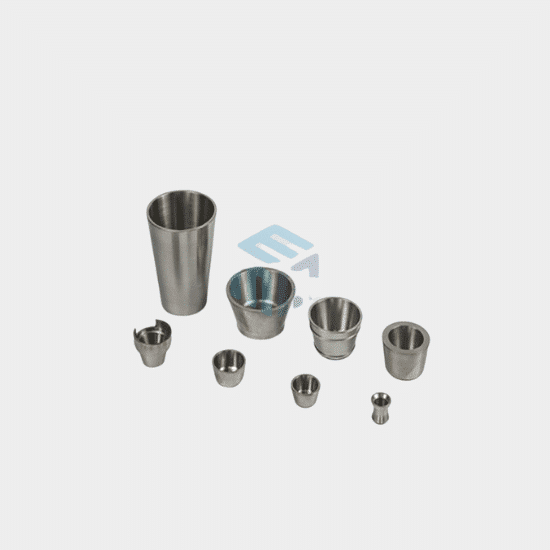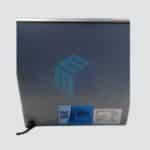- High-Temperature Furnaces: Tungsten crucibles are used in high-temperature furnaces for processes like crystal growth, metal casting, and the production of refractory materials. They can contain and withstand the high temperatures involved in these processes.
- Semiconductor Industry: Tungsten crucibles are employed in the production of silicon crystals used in the semiconductor industry. These crucibles are ideal for the Czochralski (CZ) and float-zone (FZ) methods of growing single crystal silicon ingots.
- Vacuum and Thermal Evaporation: Tungsten crucibles are used in vacuum evaporation and thermal evaporation processes to heat and vaporize materials, creating thin films on substrates in applications like thin-film deposition for optical coatings and electronics.
- Melting and Casting of Refractory Metals: Tungsten crucibles are used to melt and cast refractory metals such as molybdenum, niobium, and tantalum, which have high melting points, for various industrial applications.
- Chemical Processing: Tungsten crucibles are employed in chemical research and processing applications where chemical inertness and high-temperature resistance are required.
- Powder Metallurgy: Tungsten crucibles are used in the sintering and consolidation of metal powders, ceramics, and other materials in the powder metallurgy process.
- Aerospace and Defense: Tungsten crucibles may be used in specialized aerospace and defense applications where high-temperature and chemical resistance are essential.
Pure tungsten crucibles have remarkable temperature and atmosphere resistance capacities, which make them suitable for a wide range of high-temperature applications. Here are some key aspects of their resistance capacity:
- Temperature Resistance:
- Pure tungsten has a melting point of approximately 3,422 degrees Celsius (6,192 degrees Fahrenheit). Tungsten crucibles can withstand temperatures close to this extreme value without melting or deforming.
- Tungsten retains its structural integrity and mechanical properties at very high temperatures, making it an excellent choice for processes that involve extreme heat, such as melting and casting refractory metals and high-temperature alloys.
- Atmosphere Resistance:
- Tungsten crucibles are highly resistant to chemical reactions and corrosion in various atmospheric conditions. They are particularly well-suited for use in vacuum or inert gas environments.
- Tungsten’s resistance to oxidation and reaction with most gases at elevated temperatures is remarkable. However, at temperatures above about 500°C (932°F), tungsten can react with oxygen to form tungsten oxide, which can lead to embrittlement. Therefore, in oxygen-rich or oxidizing atmospheres, the temperature at which tungsten crucibles can be safely used is lower.
To maximize the performance and lifespan of pure tungsten crucibles, it’s essential to consider the specific application conditions. In particular, the type of atmosphere (vacuum, inert gas, reducing gas, or oxidizing gas) and the presence of any impurities can affect the crucible’s resistance to chemical reactions.
Manufacturers of tungsten crucibles often provide guidelines for their usage in different environments and under various temperature conditions. It’s advisable to consult with the manufacturer or supplier to ensure you are using the crucible within its recommended temperature and atmosphere resistance limits for your specific application.
Tungsten crucibles play a critical role in industries that require the containment and processing of materials at extremely high temperatures. Their exceptional properties make them invaluable in various high-temperature applications, where other materials would not be able to withstand extreme conditions. We are a USA company catering products and solutions in the USA, Australia, India, New Zealand, Singapore, Malaysia, South Korea and Vietnam.







